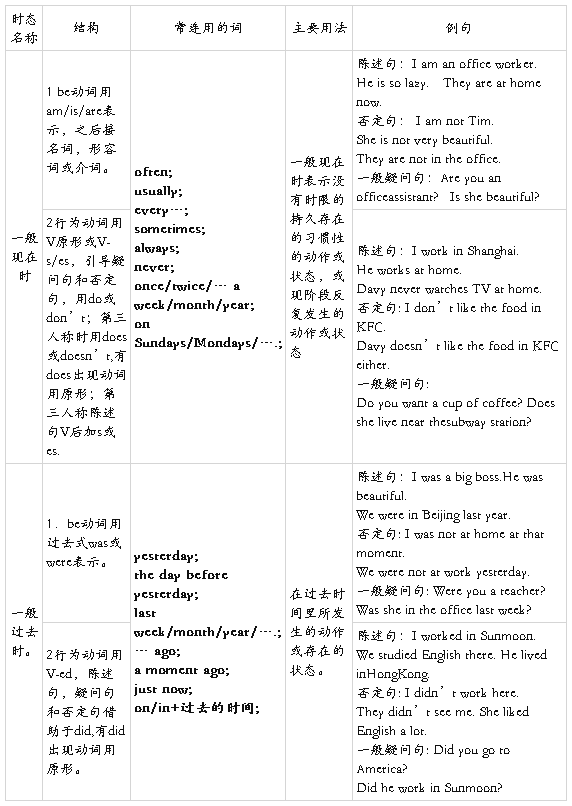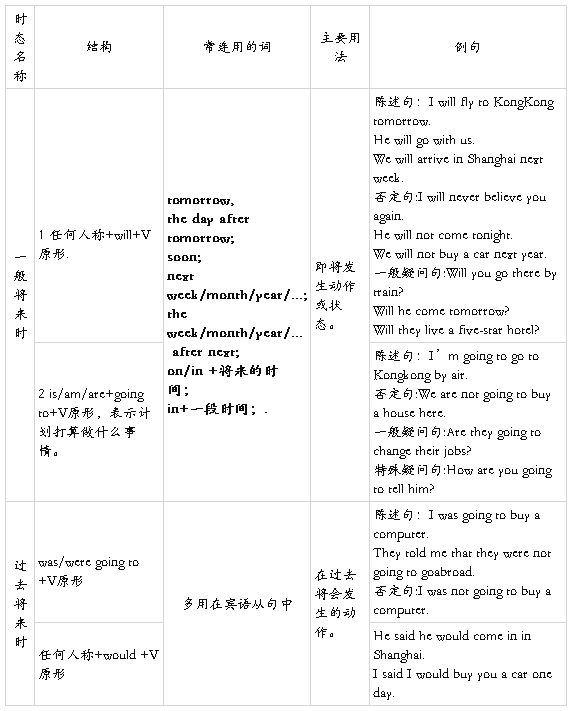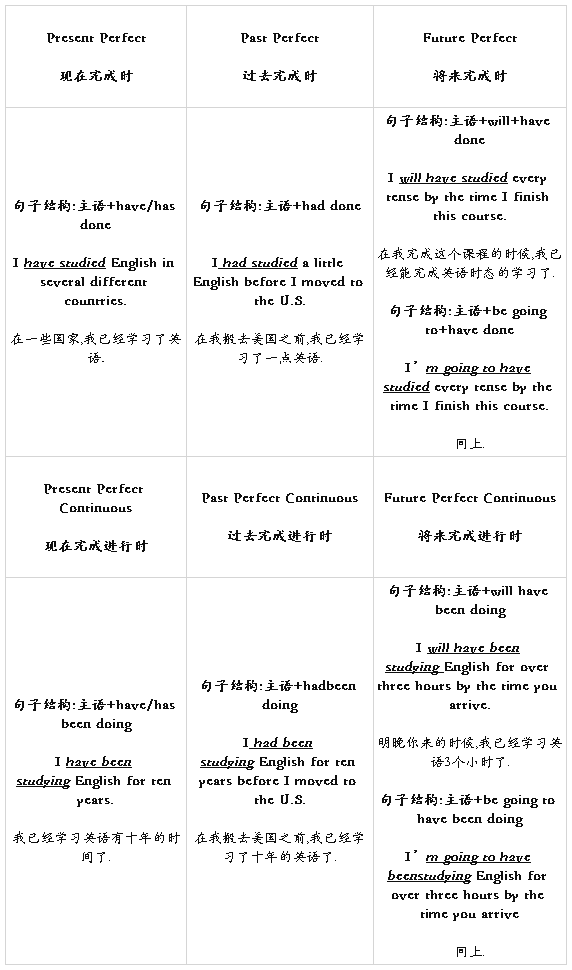各种时态的主动结构:
一般现在时(表习惯性,经常性,反复性):
1.主语+am/is/are+其他
2.三单主语+动词-s/-es形式+其他
3.非三单主语+实义动词原形+其他
一般过去时(表动作发生在过去):
1.主语+was/were+其他
2.主语+实义动词过去式+其他
一般将来时(表动作发生在将来):
1.am/is/are going to+动词原形
2.will/shall+动词原形
过去将来时(表动作发生在过去的将来):
1.was/were going to +动词原形
2.Would+动词原形
现在进行时(表动作现在或目前正在发生):am/is/are +动词-ing 过去进行时(表动作过去某一时间正在发生):was/were+动词-ing 现在完成时(表动作发生在过去,对现在造成的影响或结果;或者动作持续到现在或将来):
has/have+动词过去分词(have/has done)(三单主语用has,其他人称用have)
过去完成时:(表过去某个动作之前的那个动作,即过去的过去)had+
动词过去分词(had done)
各种时态的被动结构:(done指过去分词) 一般现在时:am/is/are done
一般过去时:was/were done
一般将来时:1,shall/will be done
2, am/is/are going to be done
过去将来时:1,would be done
2, was/were going to be done
现在进行时:am/is/are being done 过去进行时:was/were being done 现在完成时:have/has been done 过去完成时:had been done
含情态动词的被动结构:情态动词+be done 不定式的被动结构: “to be done”。
…… …… 余下全文








